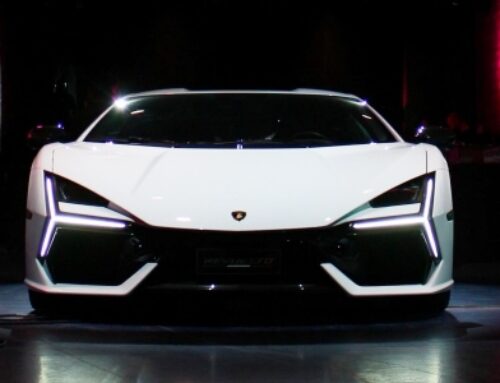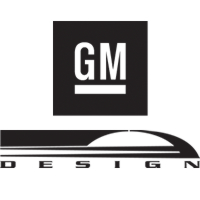Photos by John Grafman
Mitsubishi Motors North America, Inc. (MMNA) today debuted the MITSUBISHI eX Concept, a compact SUV with a next-generation EV system, at the 2016 Los Angeles Auto Show. The concept car is a showcase of Mitsubishi’s electric vehicle (EV) technologies, a new iteration of the Dynamic Shield front design concept, autonomous driving capabilities, Artificial Intelligence (AI) as well as a vast range of other technologies for superior driving pleasure in a compact crossover package.
“We have a very exciting plan to take Mitsubishi Motors to the next level, and that plan is through crossovers and electrified vehicles,” said Don Swearingen, chief operating officer, MMNA. “The eX Concept redefines the future of the compact SUV and is representative of the company’s design direction, both inside and out. With nearly 50 years’ experience of automotive electrification technology, we have the expertise and know-how to pioneer a new future with next-generation electric vehicles.”
Elegance + SUV + 100% Electric
The MITSUBISHI eX Concept is a vision for a unique 100 percent electric-powered compact SUV aimed at the fast-growing compact SUV market. It uses Mitsubishi’s state-of-the art electric-powered technologies and all-wheel control combined with automated driving, connected car interfacing and active safety technologies.
Both exterior and interior indicate the direction Mitsubishi Design is taking. Overall, it evokes the image of a sporty crossover zipping nimbly around town as it merges the elegance and stylishness of a “shooting brake” (a term for a coupé with flowing styling fused with a hatchback car) with compact SUV lines. The front end is a new interpretation of the Dynamic Shield front design concept found in Mitsubishi’s current product lineup.
EV System and Twin Motor 4WD/S-AWC
The MITSUBISHI eX Concept embodies the culmination of all the technologies Mitsubishi has developed to date and uses the next-generation EV system, which brings together a longer cruising range as well as superior driving performance. The system is configured from a new drive battery that greatly improves on the energy density of previous batteries as well as front and rear compact high-output motors. Together with the reduction in weight and higher efficiency of the new EV system, a non-compromising reduction in the weight of the body has given the MITSUBISHI eX Concept a cruising range of 400km (248.5 miles). This drivetrain delivers the kind of torquey acceleration that can only be enjoyed in an EV as it delivers 70 kW (94 horsepower) to both front and rear wheels for a total output of 140 kW (188 horsepower) of power.
The Twin Motor 4WD drivetrain incorporates the S-AWC integrated vehicle dynamics control system that uses braking to control the front wheels and a transfer mechanism (Active Yaw Control) that varies torque split between the rear wheels. With the AYC controlling rear wheel drive split, the MITSUBISHI eX Concept delivers handling that faithfully reflects driver intent.
The driver can select between three different drive modes to extract the full performance of the S-AWC system. AUTO mode uses sensors and cameras which monitor and feedback road surface conditions to the S-AWC control unit so that it automatically selects the optimum drive mode for the surface conditions encountered along the route. GRAVEL delivers optimum traction and drive on unpaved roads and in heavy rain while SNOW delivers optimum handling on snow-covered or other slippery surfaces.
The MITSUBISHI eX Concept can be connected to a V2H device that allows the energy stored in the drive battery to supply enough electricity battery to power domestic appliances in an average household for four days. A 1500W 100V AC socket also allows the battery to power home electric appliances when enjoying outdoor pursuits.
Mitsubishi Connected Car Technology
Mitsubishi’s advanced connected car technology integrates vehicles with information networks. By utilizing these networks, Mitsubishi Connect offers a wide variety of services and brings a greater richness to your time in the car.
- Know More, Explore More
Artificial Intelligence (AI) services linked to the Cloud can match information stored from Internet searches and movements at home and places you visit with your interests and tastes. When the AI service picks up information related to that in the Cloud while you are driving, it makes recommendations and can even send coupons to your smartphone. - Prevention, Speedy Response Bring Greater Reassurance
Linked constantly to the Cloud, Mitsubishi Connect can help avoid accidents by combining and utilizing information about other vehicles and infrastructure near your car. It also analyzes the car to detect abnormalities or signs of malfunction before they occur, and encourages you to have it repaired or serviced. Should you be involved in an accident, it automatically transmits sensor information on the damage (the seriousness of the crash, whether airbags have deployed or not, etc.) as well as the location of the crash through a vehicle emergency communication system. With these features, Mitsubishi Connect offers all-round support for more reassuring and comfortable motoring. - Effective Use of Time, More Convenience with Smartphone Link
Connecting your car to the Internet allows you to make a reservation at a restaurant and make purchases with a reserved ticket before you arrive at the shop. In addition, linking your car to a smartphone makes it possible to send and receive voice messages as well as use social network services.
Advanced Active Safety Technology
Further evolutions in Mitsubishi’s advanced active safety technology system supports safer and more comfortable driving. the advanced active safety technology system includes the Forward Collision Mitigation system (FCM) and the Ultrasonic miss-acceleration Mitigation System (UMS). FCM automatically applies the brakes when the camera and radar detect a sudden reduction in the distance with the vehicle in front and helps to avoid a collision or reduce impact damage in the event of a collision. At night or at other times of poor visibility, the FCM system may also detect (with its camera & radar) objects like pedestrians or bicycles ahead of the vehicle and warn the driver there is the possibility of a collision. If necessary, the system will also automatically apply the brakes to avoid an accident.
The Ultrasonic miss-acceleration Mitigation System (UMS) plus Brake Control uses radar to detect obstructions either in front or behind the vehicle and regulates motor power when the driver presses their foot on the accelerator by mistake to prevent the vehicle from going forward. It also audibly and visually alerts the driver.
- Blind Spot Warning system (BSW)
The Blind Spot Warning system (BSW) uses ultrasound sensors and radar to monitor the areas behind the vehicle most likely to be blind spots. With both audible and visual alerts, the system notifies the driver when it detects a car behind. - Lane Change Assist system (LCA)
The Lane Change Assist system (LCA) works in cooperation with BSW to assist the driver when there is traffic merging or when changing lanes on a highway. Should a vehicle be detected approaching one of the rear corners of the car, LCA uses audible and visual alerts to warn the driver and automatically corrects the steering wheel angle if necessary to help prevent contact with another vehicle. - Front and Rear Cross Traffic Alert
When driving either forward or backward out of a garage that faces the road, this front and rear mounted camera and radar-based system issues a warning when it detects an approaching vehicle. - Road Condition Detection Sensor
As well as detecting irregularities in the road surface, this camera and radar-based system deduces changes in the vehicle’s operating environment – such as from asphalt to dirt to sand – and changes in road surface conditions due to the weather. This information is used in the control of the S-AWC integrated vehicle dynamics control system.
The system also shares this road surface information with other cars through a connected car link. As an example, this allows cars to adjust their driving based on information from other cars in front of them about road conditions that have suddenly worsened. Also, in the event of a natural disaster, the system can store and analyze data detected by a number of vehicles and inform many more cars about which roads are passable and the condition of such roads. - Communications-based Accident Avoidance System
Employing vehicle-to-vehicle, vehicle-to-road and vehicle-to-pedestrian communications, this system helps prevent accidents by detecting objects the driver cannot readily see and alerts the driver. For example: pedestrians on the other side of the car or oncoming cars and pedestrians when you are waiting to turn at an intersection corner. - Automated Parking Assist
When parking in a garage or parallel-parking the car, this camera and sensor-based system monitors the amount of space available and the perimeter of the car and then automatically operates the steering wheel and brakes to complete the parking maneuver. The system reduces effort and stress for drivers when parking in tight spaces. - Driver Monitor
The Driver Monitor system employs an infrared camera in the dashboard and sensors in the steering column and the driver’s seat. This monitors eye blinking, changes in posture, heart rate and other biological signals as well as vehicle drifting and other abnormalities in their driving to determine their level of wakefulness. Any time it detects a loss of concentration or that the driver has taken their eyes off the road ahead, the system immediately issues an alert.
Automated Driving Technology Brings People & Cars Closer Together
The automated driving of a car is slowly but surely becoming a reality. The MITSUBISHI eX Concept pursues a variety of automated (and semi-automated running) driving technologies that are very compatible with EVs. Mitsubishi has developed, for example, a satisfying and convenient Automated Valet Parking system taking advantage of the precision control possible with electric motor drive thanks to the dependable torque generated by an electric motor that delivers predictable driving performance. This performance instantaneously responds to situational changes found in autonomous driving on roads solely for vehicular use, or in automated obstacle avoidance systems. Automated Driving Mode position lamps are switched on to tell other vehicles when the automated driving system has taken over operation of the car.
Automated Valet Parking System / Wireless Battery Charging
Smart Valet Parking uses connected car technology to link car parking systems at hotels and restaurants with the vehicle’s autonomous maneuvering system, allowing the vehicle to find its own parking spot, park itself and be retrieved without any driver input.
Occupants get out of the vehicle after the driver leaves it at the Smart Valet Parking area. When they are ready to return home the driver can press an icon on their smartphone or smartwatch and the vehicle automatically drives itself back to the original Smart Valet Parking area where the driver first left it.
Smart Valet Parking systems provide EV charging bays with wireless charging using solar or other renewable energy sources. EVs that need their battery charged are automatically driven to an available parking spot with a charging bay. Departure times and other instructions can easily be changed using a smartphone or smartwatch.
Automated Driving (Semi-automated Running) on Highways and other Public Roads
Using information from vehicle-to-vehicle and vehicle-to-road communications as well as from cameras and radar mounted to the car, the automated driving system analyzes the situation around the perimeter of the vehicle and autonomously varies vehicle speed or changes lanes accordingly. The system also acquires information from the Cloud on traffic conditions at the destination and assists the driver in avoiding accidents.
The major technologies employed include:
- Cooperative Adaptive Cruise Control (CACC): When driving on highways or other roads this system uses vehicle-to-vehicle communications to share information on whether or not other vehicles are accelerating or decelerating, which makes following the vehicle ahead safer
- Lane Keeping Assist (LKA): Uses cameras to determine the position of lane dividing lines and keeps the vehicle between them.
- Automated Lane Change: This system promotes safe driving by cooperating with LCA and BSW to change lanes when it detects changes in the road situation ahead such as congestion, lane restrictions due to road work, or objects that may have fallen into the street ahead of the vehicle.
In addition, an Automated Obstacle Avoidance System uses cameras and a radar mounted to the vehicle, as well as communications with vehicles in the vicinity, to detect any obstacles so the car can avoid them.
While intricately regulating the distance to other vehicles in the vicinity, whether in congested traffic or travelling at high speed on a highway, this makes for safer driving and also reduces electricity costs because it avoids unnecessary acceleration and braking.

































